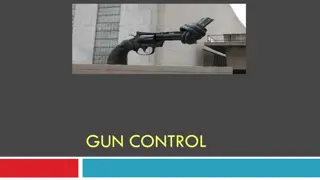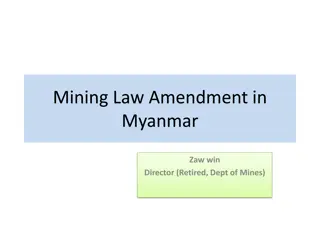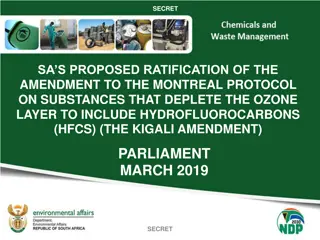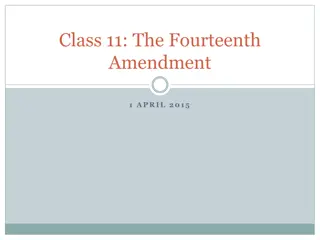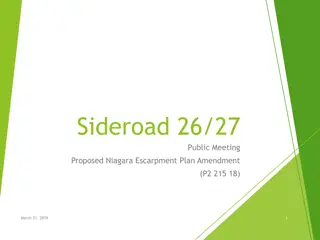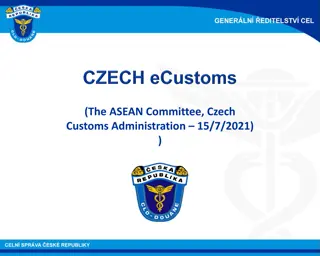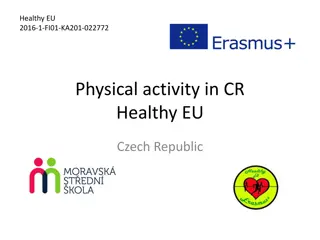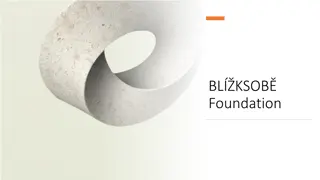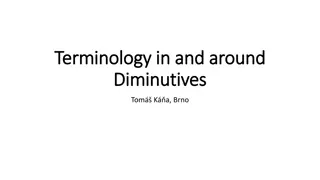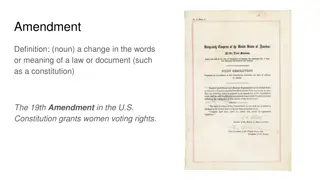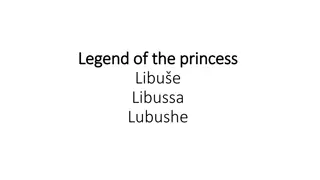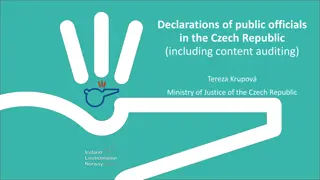Implementation of CPPNM and Its Amendment in Czech Legislation
The implementation of the CPPNM and its amendment into Czech legislation is detailed, covering nuclear facilities, Czech nuclear law history, and the Atomic Act. The reformation of nuclear law aimed to adapt to new international standards and lessons learned from incidents like Fukushima. The European law directives and international treaties governing nuclear activities are also discussed.
Download Presentation

Please find below an Image/Link to download the presentation.
The content on the website is provided AS IS for your information and personal use only. It may not be sold, licensed, or shared on other websites without obtaining consent from the author. Download presentation by click this link. If you encounter any issues during the download, it is possible that the publisher has removed the file from their server.
E N D
Presentation Transcript
Implementation of the CPPNM and its Amendment into the Czech Legislation Eduard Kloboucek
Nuclear facilities in Czech Republic 2 NPP Dukovany (4), Temel n (2) 3 nuclear research reactors e (2), Czech Technical University in Prague Uranium mine in Doln Ro nka (closed 2017) 3 radioactive waste repositories (1 closed) Deep geological repository in 2065? Fresh fuel and interim spent fuel storages 2
CPPNM and CPPNM/A in CR 1980 CPPNM signed at Vienna and at New York on 3 March 1980. 1981 (1982) - The Czechoslovak Socialist Republic signed and ratified CPPNM concerning Article 17, para. 2 1991 - The Czech and Slovak Federal Republic deposited an instrument of withdrawal of the above- mentioned reservation 1993 succeeded to the CPPNM 2010 accepted CPPNM/A 2016 CPPNM/A entry into force with reservation 4
Czech nuclear law - history Act No. 18/1997 Coll., On Peacefull Use of Nuclear Energy and Ionising Radiation (Atomic Act) First comprehensive legislation in nuclear law 27 Amendments State Office for Nuclear Safety New Act no. 263/2016 Coll., Atomic Act 5
Act no. 263/2016 Coll., Atomic Act Complex reformation of the nuclear law started in 2010 - Synopsis of a new act Main goals: Adapt the nuclear law to New international legally binding instruments New IAEA recommendations New WENRA reference levels ICRP 103 Lessons learnt from Fukushima and Stress tests Lessons learnt from IRRS mission (2013) Recent requirements of national legislation Modernize the nuclear law from legislative perspective 6
Act no. 263/2016 Coll., Atomic Act European law Council Directive 2009/71/Euratom - NSD Council Directive 2013/59/Euratom - BSS Council Directive 2011/70/Euratom RAW and SNF Council Regulation (Euratom) No 1493/93 Transport (shipments) Commission Regulation (Euratom) No 302/2005 Safeguards Council Regulation (EC) No 428/2009 Dual use items International treaties (e.g.) NSC CPPNM/A Joint Convention NPT Trilateral Treaty (IAEA, Euratom, CR) IAEA (e.g.): Fundamental Safety Principles Site Evaluation for Nuclear Installations Safety Requirements Safety of Nuclear Power Plants: Operation Safety Requirements The Management System for Facilities and Activities Code of Conduct on the Safety and Security of Radioactive Sources ICRP recommendation no. 103 7
Act no. 263/2016 Coll., Atomic Act Adopted as Act no. 263/2016 Coll., Atomic Act On 14th July 2016 Replaces current Act no. 18/1997 Coll. Only minor part (civil liability for nuclear damage) remains valid Enters into force on 1st January 2017 Accompanied by Act no. 264/2016 Coll., amending related acts, e.g.: Construction code Mining law Medical law Contains 5 parts, 18 chapters 240 articles 2 appendices 8
Act no. 263/2016 Coll., Atomic Act Structure General provisions and definitions Nuclear energy utilization Radiation protection in ionizing radiation utilization Radioactive waste management Type approval and transportation Monitoring of radiation situation Emergency management Security Head IX - art. 159 to 164 Non-Proliferation Enforcement Public administration 9
Implementing legislation - Decrees Decree No. 358/2016 Coll., on requirements for assurance of quality and technical safety and assessment and verification of conformity of selected equipment Decree No. 359/2016 Coll., on details of ensuring radiation extraordinary event management Decree No. 360/2016 Coll., on radiation situation monitoring Decree No. 361/2016 Coll., on security of nuclear installation and nuclear material Decree No. 362/2016 Coll., on the conditions for the award of the grant from the state budget in some existing exposure situations Decree No. 374/2016 Coll., on the accountancy and control of nuclear materials and reporting of information on them Decree No. 375/2016 Coll., on selected items in the nuclear area Decree No. 376/2016 Coll., on dual-use items in the nuclear area Decree No. 377/2016 Coll., on the requirements for the safe management of radioactive waste and on the decommissioning of nuclear installations or category III or IV workplaces Decree No. 378/2016 Coll., on siting of a nuclear installation Decree No. 379/2016 Coll., concerning the approval of some products in the field of peaceful use of nuclear energy and ionising radiation and the carriage of radioactive or fissile material Decree No. 408/2016 Coll., on management system requirements Decree No. 409/2016 Coll., on activities especially important from nuclear safety and radiation protection viewpoint, special professional qualification and training of persons ensuring radiation protection of the registrant Decree No. 422/2016 Coll., on radiation protection and security of a radioactive source Decree No. 21/2017 Coll., on ensuring nuclear safety of nuclear installation Decree No. 162/2017 Coll., on requiremetns for safety assesment according to the Atomic Act Decree No. 329/2017 Coll., on requiremetns for design of nuclear installation 10
Other legislation dealing with nuclear security Act No. 40/2009 Coll., Criminal Code. Act No. 412/2005 Coll., On the Protection of Classified Information and Security Eligibility Decree No. 374/2016 Coll., On the Accountancy and Control of Nuclear Materials and Reporting of Information on Them, Decree No. 408/2016 Coll., On Management System Requirements Decree No. 422/2016 Coll., On Radiation Protection and Security of a Radioactive Source 11
Nuclear security in CR Regulatory body State Office for Nuclear Safety Licensing (approval of documentation - physical protection assurance plan, physical protection assurance plan for the carriage of nuclear materials of categories I to III,) Inspection Enforcement (fines, licence withdrawal ) Licence holders responsibility for nuclear security Skupina EZ 12
New institutes introduced by the 2016 Atomic Act Concept of nuclear security DBT Sensitive activities Security of uncategorized nuclear material Security of radioactive sources Vital area Security culture Graded approach, defense in depth 13
Concept of nuclear security Former legislation only physical protection New AA came up with broader concept of security (security of nuclear installations, nuclear materials and sources of ionising radiation) Incorporation of sensitive activities, computer security 14
Design Basis Threat Combination of prescriptive and performance-based approach DBT is established by the decision of State Office for Nuclear Safety on the basis of a binding opinion of the Ministry of the Interior, the Ministry of Defence and the Ministry of Industry and Trade Annual meetings of ministries and other stakeholders regular updates of DBT The method of ensuring physical protection of nuclear installations and nuclear material shall correspond to the hazards arising from the design basis threat Classified document 15
Sensitive activities New Atomic Act membership in a statutory body of a Licence holder organisation and management of the operation of a nuclear installation direct management of the operation of a nuclear reactor management of radiation extraordinary event responses in accordance with an on-site emergency plan or emergency regulations unaccompanied entry into a vital area unaccompanied entry into an area where nuclear material of category I or II is located and management of this material Obligatory security clearance from National Security Office Growth of people preforming sensitive activities 3 years interim period Former act based on the functions, new one on actual entry 16
Uncategorized nuclear material 162 Security outside physically protected areas and sensitive activities (1) The security of nuclear material not classified in the categories referred to in 159 shall be ensured by placing it in a locked, enclosed area and by keeping a record of any authorised access to it to ensure that it is protected against unauthorised access. 17
Note: Categorisation of nuclear material in CR Decree No. 361/2016 Coll., on security of nuclear installation and nuclear material (Annex) 18
Security of radioactive sources 164 Security of radionuclide sources (1) Licence holders performing activities in planned exposure situations and notifying persons using a type-approved minor source of ionising radiation shall a) secure the radionuclide source against unauthorised access, use or relocation by applying a graded approach, taking into account the security category and the method of management of the radionuclide source, b) instruct and verify the knowledge of workers with access to the radionuclide source of the security requirements and c) ensure security of radionuclide sources of security categories 1 to 3. (2) Implementing legislation shall establish the method of ensuring security of radionuclide sources, including radionuclide sources of security categories 1 to 3. Decree No. 422/2016 Coll., on radiation protection and security of a radioactive source 19
Vital area Former legislation guarded area protected area inner area New Atomic Act guarded area III.NM protected area II. NM inner area I. NM vital area Decree No. 361/2016 Coll., on security of nuclear installation and nuclear material Article 4 The following areas shall be delineated in a nuclear power installation with the use of a defence in depth a) The vital area, if any intentional damage to the systems and components relevant to nuclear safety located within this area can directly or indirectly result in a radiation accident; in particular, this involves the areas, in which there are main control rooms and auxiliary shutdown rooms, nuclear reactor control systems, backup power sources, safety systems for residual heat removal from the core, reactor hall and spent nuclear fuel storage pool; 20
Security culture Article 30 AA (7) The persons referred to in 29(1)* shall introduce the management system in a manner ensuring that through this system are permanently developed and regularly evaluated characteristics and attitudes of persons performing activities related to the use of nuclear energy and activities in exposure situations and of their personnel, which ensure that nuclear safety, radiation protection, technical safety, radiation situation monitoring, radiation extraordinary event management and security are approached with a seriousness corresponding to their importance (hereinafter safety culture ). *) enumerated licence holders 21
Graded approach, defense in depth Graded approach Anyone who uses nuclear energy or performs activities in exposure situations when ensuring ..,security shall utilize a graded approach, depending on the magnitude of potential exposure and its possible consequences (hereinafter graded approach ), shall be applied. Defense in depth Defence in depth means a method of protection based on multiple independent levels providing a graded protection against the possibility of exposure of workers and the general public, propagation of ionising radiation and release of radioactive substances into the environment, areas shall be delineated in a nuclear power installation with the use of a defence in depth Two person rule If physical persons enter the inner or vital area, the simultaneous presence of at least two physical persons authorised to access unaccompanied and with comparable knowledge of the technology in the area visited shall be ensured. 22
Implementation of offences in Criminal Code CPPNM/A Act No. 40/2009 Coll., Criminal Code 282 Unauthorised Production and Possession of Nuclear Material 140 Murder 145 Grievous Bodily Harm 293 - Environmental Damage and Environmental Hazard Article 7 (1) (a) Article 7 (1) (b) 205 Theft, 173 Robbery Article 7 (1) (c) 206 Embezzlement, 209 - Fraud 282 - Unauthorised Production and Possession of Nuclear Material Article 7 (1) (d) 276 - Damage and Compromise of Operation of Publicly Beneficial Facility Article 7 (1) (e) Article 7 (1) (f) 175 - Extortion Article 7 (1) (g) 175 - Extortion Article 7 (1) (h) 21 -Attempt Article 7 (1) (i) Article 7 (1) (j) Article 7 (1) (k) 20 Preparation, 24 - Participant 20 - Preparation 20 - Preparation 23
Current situation and future prospects End of the interim period for adapting to this Act Licence holders finished documentation and SUJB approved those updates End of the interim period for security clearance from National Security Office in case of sensitive activities Regular meeting of authorities regarding DBT update IPPAS mission in CR in November 2020 updates to their 24
Thank you for your attention. eduard.kloboucek@sujb.cz 25
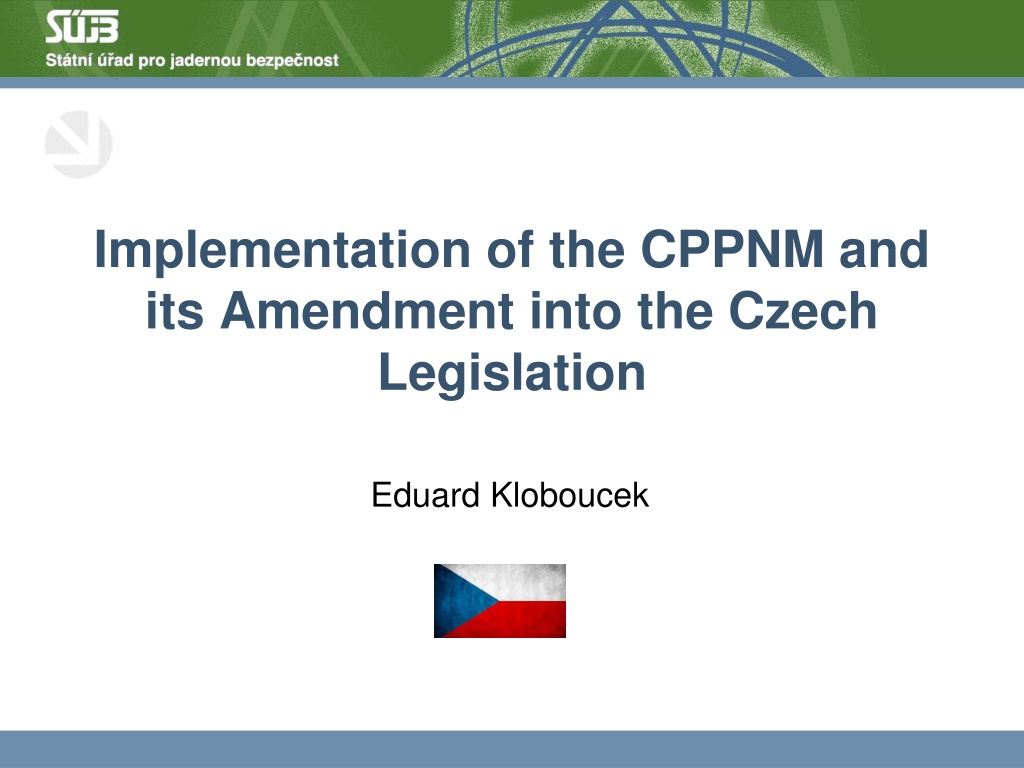


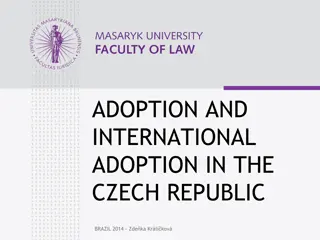
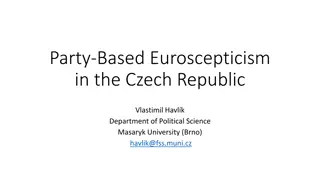


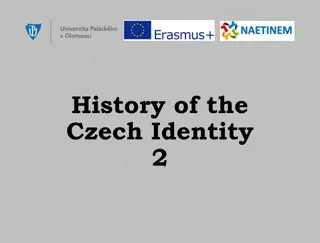

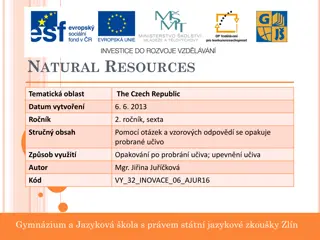
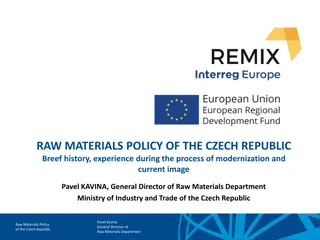
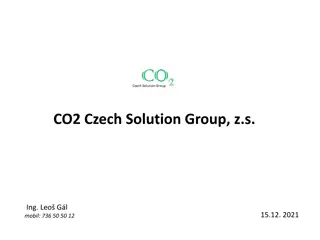
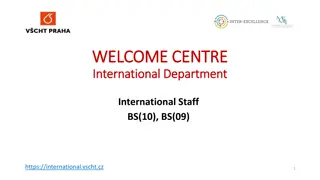
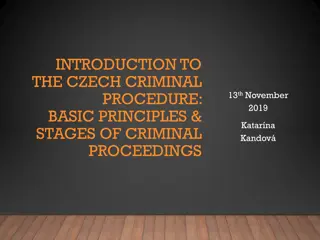
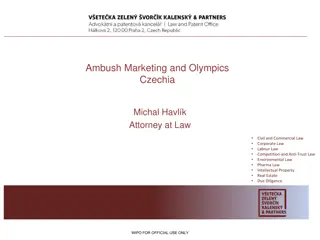
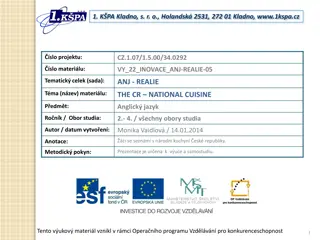
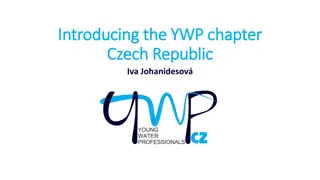

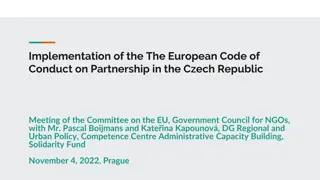
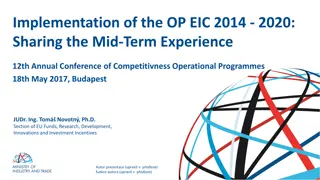
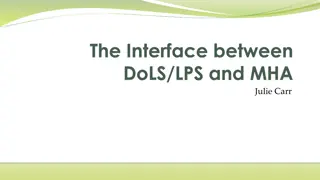
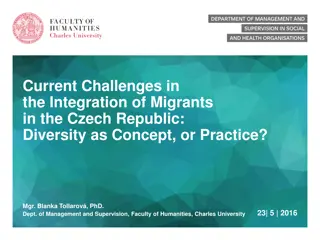
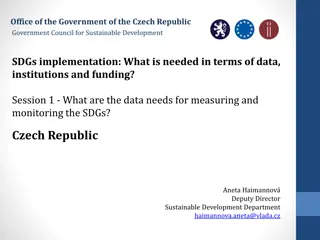


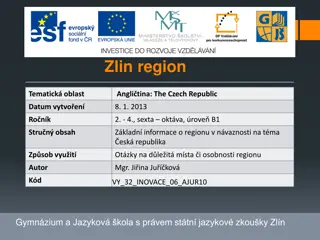


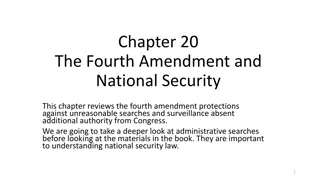
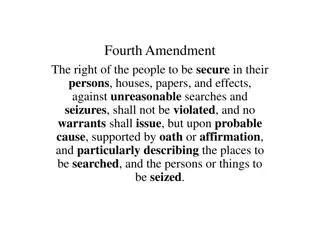
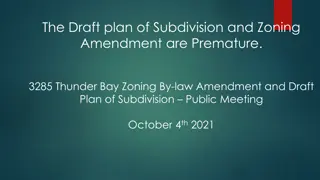
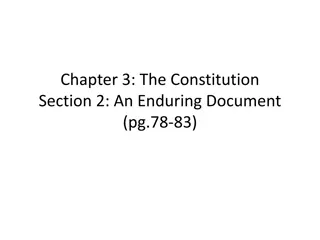
![RE: ELECTORAL MATTERS AMENDMENT BILL [ B42-2023]](/thumb/18837/re-electoral-matters-amendment-bill-b42-2023.jpg)
